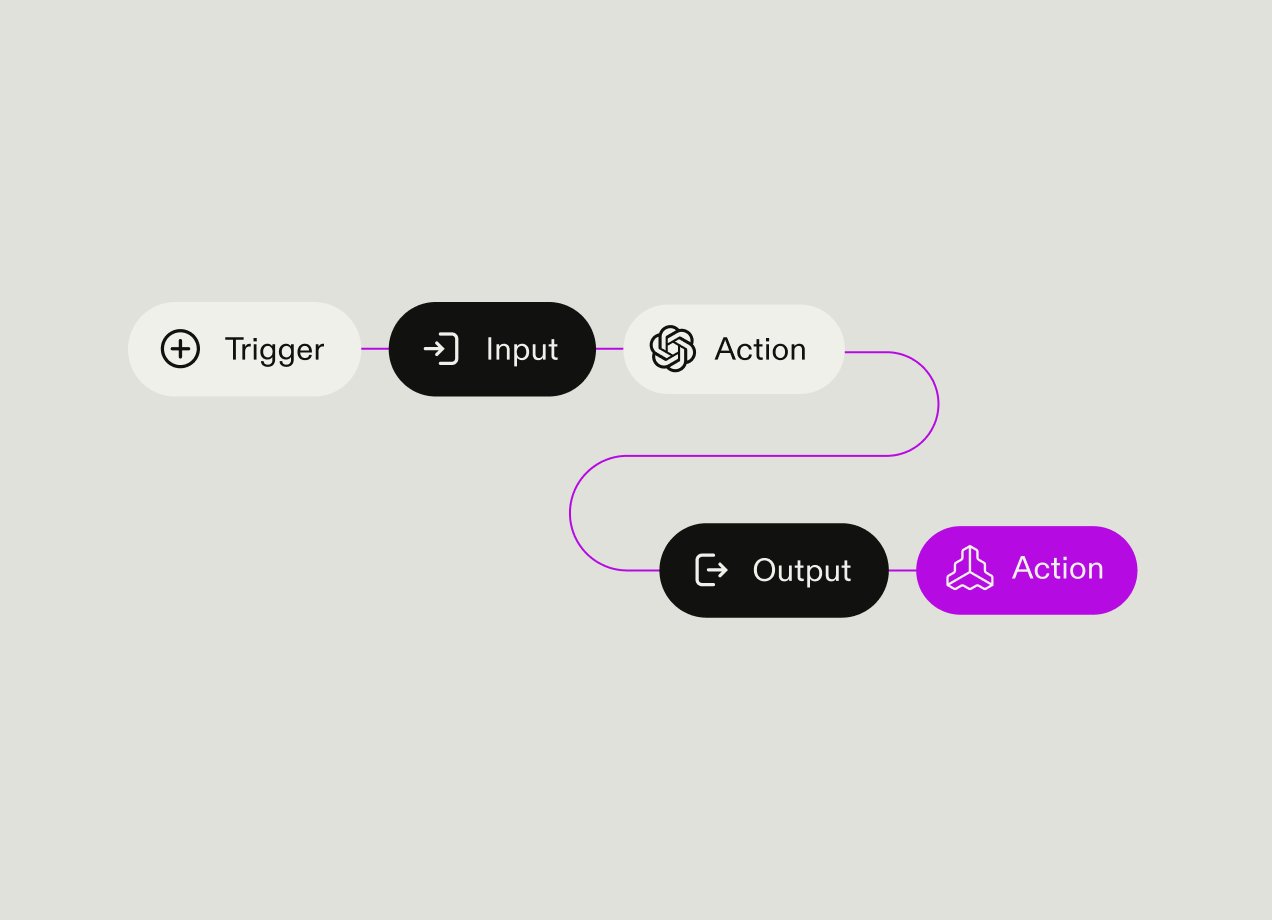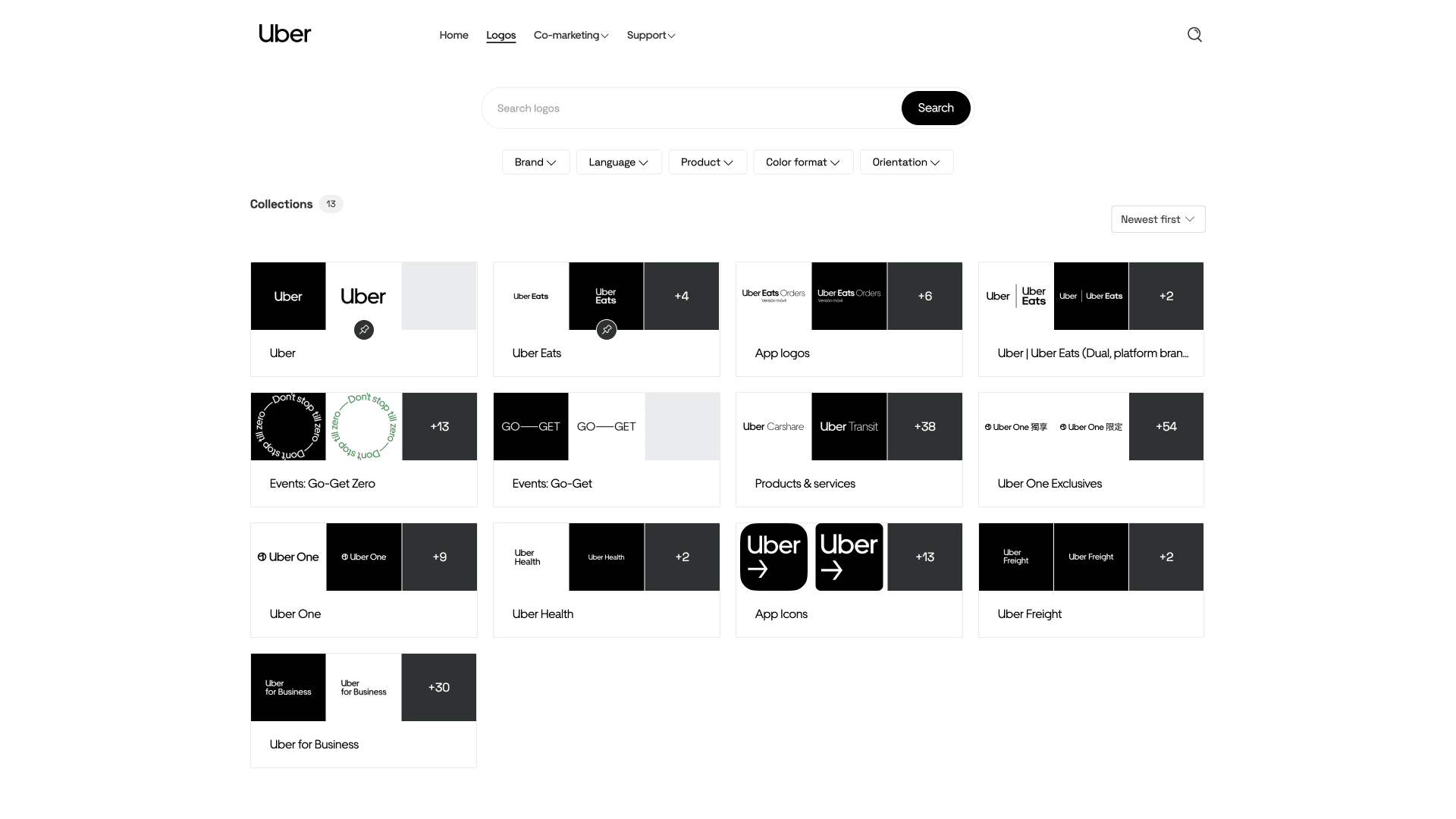Managing brand assets at enterprise scale is becoming increasingly complex. Teams wrestle with files scattered across different departments and the constant inefficiencies of scaling campaigns across regions and brands. At the same time, organizations are having to rethink how they manage their digital assets, due to company rebrands, global expansion, and shifting regulatory landscapes.
That’s why companies invest in AI-powered digital asset management. AI is no longer just about increasing output or speeding up manual tasks — it’s becoming the backbone of effective brand governance. AI digital asset management empowers enterprises to scale efficiently while enforcing governance-first controls that protect brand integrity across every channel and market.

What is AI digital asset management?
AI digital asset management (AI DAM) brings artificial intelligence and automation into the heart of DAM tools. Traditional DAM systems offer some automation functionality, like bulk uploads or metadata templates. But AI goes several steps further by continuously learning and adapting to user behavior.
For example, AI-powered digital asset management can suggest tags for a file, recommend content based on campaign goals, and even flag outdated or off-brand assets. The platforms use machine learning, natural language processing, and computer vision to analyze content in real time. They recognize objects, understand text, and identify sentiment in your digital files to create a responsive platform that helps users find what they need faster.
This new functionality changes DAM platforms from a static tool to a dynamic hub that actively supports brand and marketing teams. The system becomes an active partner in brand management rather than a storage repository.

Governance-first AI vs. AI washing
AI technology is the “hot new thing”, and it seems like every tech vendor is adding AI functionality into its products. But not all AI is created equal. Some vendors do basic “AI washing” — adding superficial AI features that don’t offer material benefits. For example, auto-tagging sounds good on paper, but can cause challenges for businesses. These features speed up simple tasks, but they don’t protect brands from compliance risks or misuse.
The more valuable option is governance-first AI, where AI is built into the platform architecture. Governance-first AI enforces brand rules, prevents off-brand content use, provides explainable, auditable oversight at scale — as well as providing conversational search and auto-tagging functionality.
How AI transforms digital asset management
Even with all the buzz around AI tools and functionality, it can be hard to imagine using AI in your DAM platform. These practical applications of AI show how it delivers concrete value rather than theoretical benefits.
Automate asset intelligence
AI automatically analyzes images, videos, and documents to extract rich metadata and identify people, objects, locations, logos, and even sentiment. The platform then suggests tags, captions, and usage-rights metadata for each file. It also flags potential brand mismatches or restricted-use content for immediate attention.
This AI functionality shifts work from manual tagging to human-in-the-loop validation. Instead of typing hundreds of keywords, teams get tag suggestions ready for review, while the system learns from their corrections. Over time the DAM grows smarter, improving both efficiency and governance.
Smart search and discovery
AI transforms how teams find content in your DAM. Natural language search lets users type conversational queries like “summer campaign newsletter images with our logo” and get precise results, eliminating the need for exact keyword matching. Visual similarity search identifies images or videos that resemble a reference asset, while content-based retrieval finds files based on objects, colors, or layout rather than metadata alone.
AI-assisted search also improves its results over time. As users interact with search results, the system learns preferences and surfaces more accurate suggestions. Filters can automatically highlight assets that comply with brand rules or usage rights.
Frontify enhances this with OCR-based text-in-image and document search, semantic understanding of user intent, and cross-library search, so that user searches span multiple repositories. These capabilities make discovery faster, reduce duplicated assets, and ensure teams consistently find the right content at the right time.
Intelligent workflow automation
AI streamlines DAM workflows by automating repetitive tasks and ensuring brand compliance at every step. It accelerates approval processes by automatically routing assets to the right stakeholders based on content type, project, or campaign rules.
For example, in Frontify you can set actions that run when specific triggers happen, such as when a user uploads a file or updates an asset. Your DAM can use AI to automatically generate and translate asset description, title and tags, or set a workflow status and custom metadata. Rights management and compliance checks are built in, flagging expired licenses, restricted content, or off-brand usage before assets are published. This reduces manual work and improves reliability across processes.

AI DAM use cases by industry
Each organization has its own goals and ways of using AI for digital asset management. But from working with companies of all sizes, we’ve identified some common ways they use AI DAM to improve operational efficiency and solve real business problems.

Enterprise marketing teams
Enterprise marketing teams’ biggest challenge is that everything happens at scale. They have massive, constantly-growing asset libraries to manage, plus large numbers of colleagues distributed across different teams, departments, and locations. Keeping content organized, accessible, and on-brand becomes increasingly difficult as the volume of files and collaborators expands.
AI enables these teams to create campaigns faster without compromising brand integrity. Intelligent tagging and semantic search make discovery effortless, while automated compliance checks enforce brand guidelines and usage rights. Teams can maintain consistent messaging across channels without slowing down production, allowing marketers to focus on creative strategy instead of administrative work.
Creative agencies and studios
Creative agencies and studios often face challenges with managing multiple asset versions, coordinating client feedback, and keeping complex projects on schedule. Teams lack the tools to help them work efficiently, often wasting time searching for the latest files, reconciling changes, and tracking approvals across platforms.
AI digital asset management helps agencies stay organized and efficient by automatically tagging, sorting, and grouping assets based on content and project context. AI-powered creative tools suggest edits, generate variations, and surface relevant assets, reducing manual work and speeding iteration. Automated file organization ensures everyone is working from the most up-to-date versions while maintaining clear audit trails for client approvals. This helps them avoid administrative bottlenecks, freeing up time and resources to focus on higher-value billable work.
E-commerce and retail
E-commerce and retail teams face the challenge of managing vast catalogs of product images, generating multiple variants, and optimizing content for numerous channels. Ensuring accuracy, consistency, and speed across online storefronts, marketplaces, and marketing campaigns can quickly become overwhelming.
AI DAM addresses these challenges by automatically tagging products, categorizing variants, and making assets instantly discoverable through visual search. Background removal, image optimization, and format conversion streamline multi-channel publishing while maintaining quality and brand consistency. Teams can quickly assemble product listings, marketing campaigns, and promotional materials at scale, with less resources required for content production.
AI features that matter most in DAM
When comparing DAM platforms, you often see a long list of features and functionality. Here are the AI-related capabilities that are most important for asset management.
Intelligent search and discovery
Intelligent search makes finding the right asset as easy as asking a question. By blending natural language, OCR, and semantic understanding, AI-powered search turns asset libraries into responsive, intuitive search engines for creative teams.
Instead of typing exact keywords, users can enter queries like “show me product photos with blue backgrounds” or “find last year’s holiday campaign banners with snowflakes” and get accurate results in seconds.
OCR technology scans images, PDFs, and presentations for text. That means you can search for assets containing a specific slogan, product name, or even a logo embedded in an image, without manually tagging those details. For global teams, this makes old campaign files instantly accessible, even if they weren’t tagged properly when first uploaded.
Smart data management and organization
AI takes the manual work out of organizing massive libraries by tagging content automatically. This auto-tagging builds a rich layer of metadata that makes assets easier to find and use. Predictive metadata goes further by suggesting categories and descriptions based on content analysis. For example, an image with a branded sneaker in a gym setting might be tagged with “fitness, lifestyle, sneaker, product launch” alongside usage rights pulled from the file.
AI also manages clutter through duplicate detection. Instead of teams unknowingly storing multiple versions of the same file, the system identifies near-duplicates, such as cropped images, resized banners, or slightly altered product shots, and consolidates them. Frontify’s duplicate detection and management runs continuously, helping enterprises reduce storage bloat, avoid compliance risks, and maintain a clean, trustworthy asset library.
Creative brand execution and governance
AI supports both content creation and brand governance, making it easier to produce assets that are on-brand from the start. By combining automation with intelligent oversight, AI helps teams produce more content faster without sacrificing consistency or compliance.
Creative automation tools generate multiple variations of images, videos, and layouts, optimize formats for different channels, and enforce brand colors, fonts, and logos automatically. AI can also generate text such as product descriptions, translations, and metadata, while checking that copy aligns with tone, style, and legal requirements.
Frontify’s Content API extends this governance beyond the DAM, surfacing brand guidelines, approved assets, and usage rules directly in external tools and workflows. This keeps creative teams aligned, reduces errors, and ensures every campaign reflects the brand accurately across all touchpoints.
Apps and integration ecosystem
AI-powered apps bring creative tasks directly into the DAM so teams don’t have to switch between tools.
Creative tools embedded in the platform help designers resize, retouch, and optimize assets in context, saving hours of manual work. Integrations with OpenAI add even more possibilities — text generation for product descriptions, AI-driven content optimization for SEO, and image creation for campaign mockups.
A strong DAM also connects to a broader app marketplace, offering specialized AI solutions such as automated translation for global campaigns or compliance-checking tools for regulated industries.
Workflow automation and intelligence
AI brings intelligence to DAM workflows by automating repetitive tasks and responding to triggers in real time. Rule-based automations can launch AI actions whenever a file is uploaded, a project status changes, or an asset enters a particular folder. This powers automated approval routing, workflow status updates, and compliance checks, ensuring every asset follows your brand and legal guidelines without constant oversight. For specialized needs, custom AI solutions can be configured to enforce industry-specific rules, automate niche processes, or integrate with unique enterprise workflows.
What to look for when evaluating AI DAM platforms
When comparing AI digital asset management platforms, you want to be confident the tool will perform well and deliver a solid return on investment. There are three core criteria to look at when comparing different vendors.
AI capability assessment
When comparing AI platforms, start by assessing whether it’s native AI or an add-on. Native AI lives inside the platform’s architecture and understands your DAM’s metadata model, governance rules, and user flows. Bolt-on integrations call external models and often lose context, produce inconsistent metadata, and complicate troubleshooting.
Run tests that mirror your daily workload to assess how different tools perform. Measure how often the system needs human correction and whether corrections help to improve results.
Use this matrix as a checklist during vendor demos and pilots. Score vendors against each row and weigh items based on your risk tolerance and volume. Push vendors to run your tests on your own sample assets, rather than their own prepared test projects.
Security and enterprise requirements
Enterprise businesses have specific requirements when implementing new tools, including AI DAM platforms. They need tools that support regulatory compliance, are secure and scalable, and offer robust integrations.
For regulatory compliance, AI decisions need to be explainable and traceable. Look for tools that can provide confidence scores attached to every AI action, plus logs that show who changed what, when. The platform should let you export those records for external audits, retain them according to policy, and roll back or override AI-driven changes when required.
You also want to be confident your AI DAM meets enterprise-level security standards. Look for tools that provide data encryption at rest and in transit, granular role-based access, and clear data-residency controls. Understand how AI tools will use your data — for example, Frontify’s Azure OpenAI for Enterprise integration guarantees no customer data is used to train public models. This ensures full ownership of your intellectual property, and provides you with encrypted, enterprise-grade infrastructure.
Make sure the vendor can properly integrate with the key tools in your existing tech stack. Check the list of native integrations to ensure the DAM will connect with your core systems. Vendors should offer integration capabilities including Active Directory/LDAP, SSO, SCIM provisioning, and robust APIs/webhooks so the DAM connects to other tools in your martech stack without fragile workarounds. Additionally, make sure your metadata, workflow triggers, and audit hooks work across integrations to support proper governance as assets move between systems.
Total cost of ownership
Total cost of ownership (TCO) goes beyond the initial price of an AI DAM platform. Vendors often package core features differently, and you may find hidden costs stack up quickly. Look closely at additional fees, such as:
- AI processing fees per asset analyzed
- API call charges for integrations
- Storage overages
- Premium pricing for advanced AI features like semantic search or visual similarity.
These unexpected fees can significantly impact budgets once the platform is live and scaled across the enterprise.
Implementation complexity also shapes TCO. Data migration timelines vary widely depending on library size, file types, and metadata quality. Custom workflow configurations may require professional services, while some platforms expect you to handle ongoing AI model training internally. Change management adds another layer of complexity: consider training time, workflow redesign, and productivity dips as teams adapt.
To help you compare different vendors, put together a basic ROI framework. Start with a baseline: how long does it take today to tag 1,000 assets, find a specific file, or route an asset through your internal reviews and approval process? For each tool, estimate efficiency gains from automation, faster search, and governance enforcement.
Why Frontify leads in AI-powered brand governance
Frontify is a top choice for companies looking for a DAM that offers AI-powered brand intelligence. Its integrated platform brings together DAM, brand guidelines, templates, and governance-first AI.
Brand governance is at the heart of Frontify’s AI functionality. Its AI-powered Brand Assistant can answer user questions and retrieve approved assets instantly, helping to enforce brand standards while enabling creativity. Frontify’s Azure OpenAI for Enterprise integration guarantees that no customer data is used to train public models.
The platform’s native AI features provide real-time brand guidance and compliance enforcement, driving measurable return on investment in four core areas:
- Time savings
- Reduced compliance risk
- Improved asset security and governance
- Increased brand adoption.
For example, Frontify has helped the Kansas City Chiefs brand team save up to 10 hours per week using the platform. They can deliver memorable, on-brand experiences across numerous digital touchpoints by providing fast and easy access to brand assets, guidelines, and information on a global scale.
“Not every brand has a stadium with a jumbotron and 74,000 screaming fans. Not every brand has 20+ social channels, ranging from a kids club or mascot to our main account or Chiefs cheerleaders,” said Jordan Giesler, Creative Director. He added, “The Frontify platform has enhanced collaboration with our partnerships team — they love it. It's reduced the barrier to entry when it comes to design and creative.”


